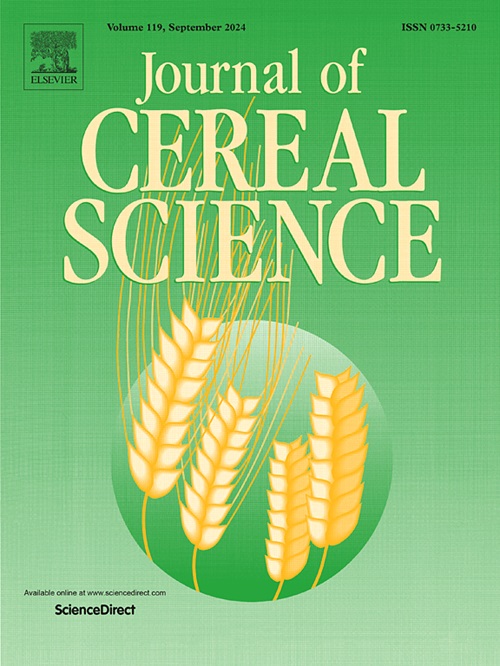Unveiling the functionality of phytase activity in maize for enhanced bioavailability of minerals: a new avenue for nutritional security
IF 3.7
2区 农林科学
Q2 FOOD SCIENCE & TECHNOLOGY
引用次数: 0
Abstract
Phytase, an enzyme hydrolyzes phytic acid in maize grains, improves phosphorus and mineral bioavailability for monogastric animals and humans. The phytase1 gene regulates bioavailable phosphorus levels by degrading phytic acid into lower myoinositols. Considering variation in phytase-activity, a set of high- and low-phytase activity-based diverse maize inbreds varying from 720.13 to 1292.60 U kg−1 was chosen for phytase1 gene characterization at nucleotide and protein levels. Further, 14 overlapping markers were developed covering the full-length phytase1 sequence (4695 bp), and amplicons were sequenced using Sanger sequencing. Sequence analysis revealed 17 SNPs and 8 InDels distinguishing high- and low-phytase inbreds. A nucleotide-based phylogenetic tree grouped sequenced inbreds into two distinct clusters. Further, the polymorphic regions were exploited to develop gene-specific (InDel and SNP) markers, and their polymorphism information content ranged from 0.229 to 0.371, with a mean of 0.320. Genotyping using these markers in another large set of diverse maize genotypes grouped them into two clusters, highlighting the potential of markers in classifying genotypes according to phytase activity. Thus, the comprehensive characterization of the phytase1 gene at molecular and biochemical levels provided valuable insights for developing maize cultivars with higher nutrient bioavailability through genomics-assisted breeding, offering a sustainable solution to alleviating malnutrition.
揭示玉米植酸酶活性的功能,提高矿物质的生物利用度:营养安全的新途径
植酸酶是一种酶,可以水解玉米籽粒中的植酸,提高单胃动物和人类对磷和矿物质的生物利用度。植酸酶1基因通过将植酸降解为低肌醇来调节生物可利用磷水平。考虑到植酸酶活性的变化,选择了一组基于高和低植酸酶活性的玉米自交系,从720.13到1292.60 U kg−1,在核苷酸和蛋白质水平上对植酸酶1基因进行了鉴定。此外,在phytase1全长序列(4695 bp)上发现了14个重叠标记,并利用Sanger测序对扩增子进行了测序。序列分析显示17个snp和8个InDels区分高和低植酸酶自交系。一个以核苷酸为基础的系统发育树将已排序的近交系归为两个不同的簇。利用多态区开发基因特异性(InDel和SNP)标记,其多态性信息含量范围为0.229 ~ 0.371,平均为0.320。利用这些标记对另一大组不同的玉米基因型进行基因分型,将它们分成两组,突出了标记在根据植酸酶活性分类基因型方面的潜力。因此,在分子和生化水平上全面表征植酸酶1基因,为通过基因组学辅助育种培育具有更高营养生物利用度的玉米品种提供了有价值的见解,为缓解营养不良提供了可持续的解决方案。
本文章由计算机程序翻译,如有差异,请以英文原文为准。
求助全文
约1分钟内获得全文
求助全文
来源期刊

Journal of Cereal Science
工程技术-食品科技
CiteScore
7.80
自引率
2.60%
发文量
163
审稿时长
38 days
期刊介绍:
The Journal of Cereal Science was established in 1983 to provide an International forum for the publication of original research papers of high standing covering all aspects of cereal science related to the functional and nutritional quality of cereal grains (true cereals - members of the Poaceae family and starchy pseudocereals - members of the Amaranthaceae, Chenopodiaceae and Polygonaceae families) and their products, in relation to the cereals used. The journal also publishes concise and critical review articles appraising the status and future directions of specific areas of cereal science and short communications that present news of important advances in research. The journal aims at topicality and at providing comprehensive coverage of progress in the field.
 求助内容:
求助内容: 应助结果提醒方式:
应助结果提醒方式:


